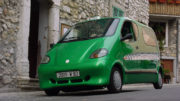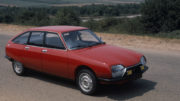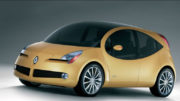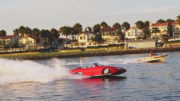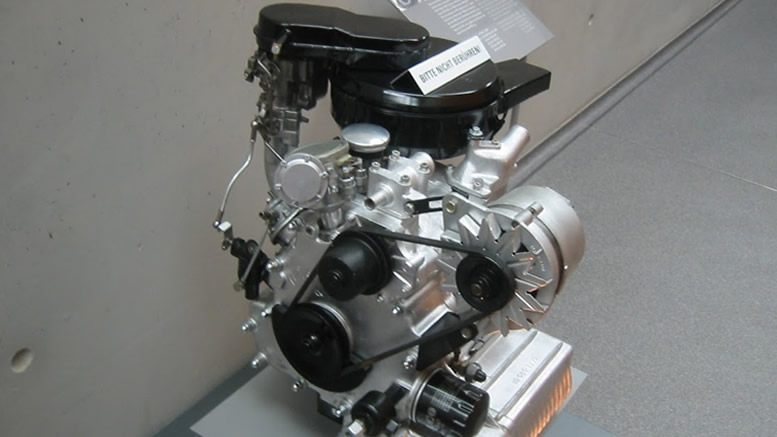 The Wankel engine is a type of internal combustion engine which uses a rotary piston instead of a linear movement piston. The rotary design is most commonly associated with the design of Felix Wankel’s engine, although several other similar designs can all be referred to as rotary engines, which, confusingly, also refers to an unrelated aircraft engine design.
The Wankel engine is a type of internal combustion engine which uses a rotary piston instead of a linear movement piston. The rotary design is most commonly associated with the design of Felix Wankel’s engine, although several other similar designs can all be referred to as rotary engines, which, confusingly, also refers to an unrelated aircraft engine design.
In the Wankel, the four cycles of a typical Otto Cycle are spread out in a circle. In the basic engine, a single oval “cylinder” (technically a trochoid shape) surrounds a basically triangular rotor which turns and moves within the “cylinder”. The corners of the rotor press against the side of the cylinder, dividing it into three chambers. As the rotor turns, the flattish sides of the rotor get closer and farther from the side of the oval, acting similar to the “strokes” in a four stroke engine. However the engine effectively has only three strokes, and provides about 2/3rds the horsepower of a similarly displacement conventional piston engine, but because Wankel engines are much smaller otherwise, power output is much higher than an equivalent weight conventional engine.
Wankels have several major advantages over traditional designs. Most notable is that they are considerably simpler and contain far fewer moving parts; for instance, they have no valves, valve trains, etc. In addition, the rotor spins the driveshaft directly, so there is no need for connecting rods, a conventional crankshaft, balance assemblies, etc. All of this makes a Wankel engine much lighter, typically half that of a conventional engine with equivalent horsepower, and as a result the performance decrease per ‘displacement unit’ is more than offset by this light weight.
Considerable effort went into designing rotary engines in the 1950s and 1960s. They were particularly interesting because of their smooth, very quiet running, and their reliability resulting from their simplicity. However the seals at the corners of the triangular rotor proved to be the design’s Achilles heel, and the engines tended to wear out much faster than originally predicted. Many interesting ideas have come along to attempt to fix these problems, but not enough money has been invested to truly solve them.
The main companies known for their Wankel-engined cars are NSU with their RO-80 model, Citroen with the GS Birotor, and Mazda, which makes them to this day (2003). In Britain, Norton Motorcycles developed a Wankel rotary engine for motorcycles; it was included in the Norton Commando, one of their motorcycle range. John Deere Inc, in the US, had a major research effort in rotary engines and designed a version which was capable of using a variety of fuels without changing the engine. The design was proposed as the power source for several US Marine combat vehicles in the late 1980s.
After many years of development, Mazda released their first automobiles using Wankel engines in the early 1970s. Customers generally loved them, notably the smoothness. However they had the very bad luck of being released during the middle of efforts to decrease emissions, and the standard solution, the so-called pollution pump, had dramatic negative effects on the gas mileage of these cars. During the 70s many of Mazda’s cars were available with a rotary, they even sold a GM Holden Premier with a 13B rotary as a Mazda Roadpacer in Japan. Mazda later pulled the rotary from most of their designs, but continued using it in their RX-7 sportscar into the 1990s. In 2003, Mazda relaunched the rotary with the new RX-8.
Other manufacturers also looked into the rotary as a viable engine during the 70s. Mercedes Benz made several prototypes and invested in Felix Wankel’s research facilities. General Motors also developed prototype Wankel rotary engines for use in the Corvette, AMC also intended to use the GM engine in the AMC Pacer but as the project was cancelled the Pacer was redesigned at the last minuet to house a conventional 6 cyl engine.
The Wankel’s superb power-to-weight ratio makes it particularly well suited to aircraft engine use. There was intense interest in them in this role in the 1950s when the design was first becoming well known, but it was at this same time that almost the entire industry was moving to the jet engine, which many believed would be the only engine in use within a decade. The Wankel suffered from a lack of interest, and when it later became clear that the jet engine was far too expensive for all roles, the general aviation world had already shrunk so much that there was little money for new engine designs. Nevertheless, interest in them for small aircraft has continued.
Wankels have made something of a comeback in recent years. None of their advantages have been lost in comparison to other engines, and the introduction of better materials has helped the tip-seal problem. They are being found increasingly in roles where their compact size and quiet running is important, notably in drones, or Unmanned Aerial Vehicle (UAVs). More recently, these UAV-designed engines are being found increasingly in other roles, such as personal water craft and auxiliary power units (APUs) for aircraft.
Aside from being used for internal combustion engines, the basic Wankel design has also been utilized for air compressors, and superchargers for internal combustion engines, but in these cases the basic advantages of the Wankel over the four-stroke internal combustion engine are not relevant. In a design using a Wankel supercharger on a Wankel engine, the supercharger is twice the size of the engine! Perhaps the most exotic use of the Wankel design is in the seat belt pretensioner system of the Volkswagen New Beetle. In this car, when deceleration sensors sense a potential crash, small blank cartridges are triggered electrically, and the resulting pressurized gas feeds into tiny Wankel engines which rotate to take up the slack in the seat belt systems, anchoring the driver and passengers firmly in the seat before any collision.

